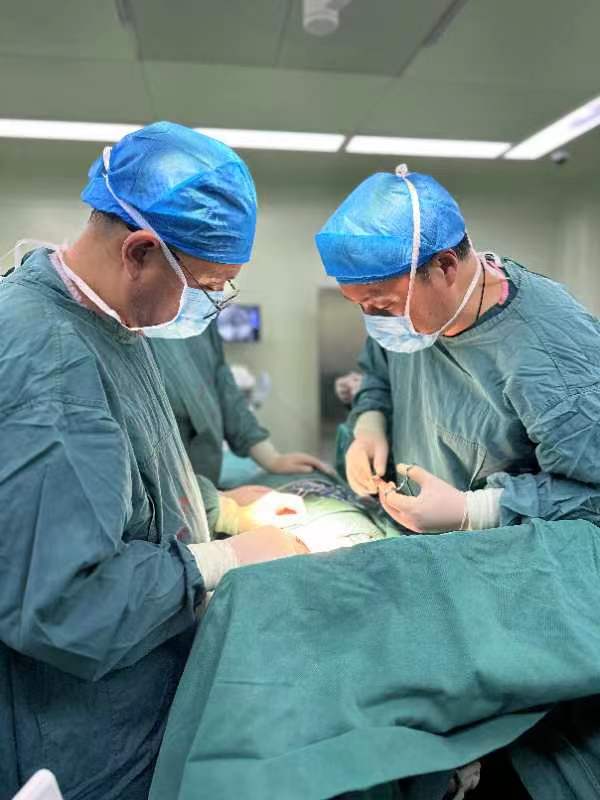Recently, Yulin Hospital of the First Affiliated Hospital (FAH) of Xi’an Jiaotong University (XJTU) adopted spinal cord electrical stimulation to successfully treat a rare case of unilateral blue finger syndrome worldwide.

A 73-year-old patient, surnamed Zhang, has been seeking for effective medical treatment nationwide for over a year due to severe pain and purple and black fingers in the left hand. During corresponding treatment in different hospitals, relevant symptoms became increasingly worsened, the finger skins were partially necrotized and fell off, the purple and black areas were enlarged, the temperature of the left hand skin was extremely low, especially at the finger tip. The patient was diagnosed with blue finger syndrome, and the VAS score was 8.
"This is a phenomenon that fingers or toes turn white, blue and red due to peripheral vasospasm under cold or emotional pressure, primarily due to overreaction of peripheral vessels to cold or pressure, which leads to the contraction of blood vessels, thus reducing or blocking blood flow. It is a rare and acute condition in clinical practice. These patients are prone to toe amputation due to ischemic necrosis, and probably skin ulcers or necrosis." as described by Professor Wang Jun from FAH.
To mitigate surgical trauma and reduce medical expense, stellate ganglion block was chosen after consultation, whereas it yielded poor efficacy, and spinal cord electrical stimulation was eventually employed.
"Spinal cord electrical stimulation therapy can relieve pain by implanting electrode wires in the spinal epidural space and transmitting them to spinal nerve fibers through electrical pulses, which can interfere with the signal transmission of pain and promotes the self-repair of nerves. In addition, it can also inhibit the excitability of sympathetic nerve through neuroelectrical regulation of high- and low-frequency replacement. Consequently, the vagus nerve that dilates blood vessels can be excited, and subsequently the microcirculation of the distal part can be improved to the greatest extent, thereby improving the blood supply of ischemic tissues and achieving clinical goal of extreme limb salvage." as Professor Wang Jun illustrated.
Finally, the pain symptom was significantly relieved and the patient could fall asleep after continuous postoperative spinal cord electrical stimulation. At postoperative 2 d, the skin temperature of the left hand was evidently increased, the purple and black area was dramatically decreased, the color tended to become normal, the degree of pain was alleviated to grade 1-3, and the pain symptoms were relieved.